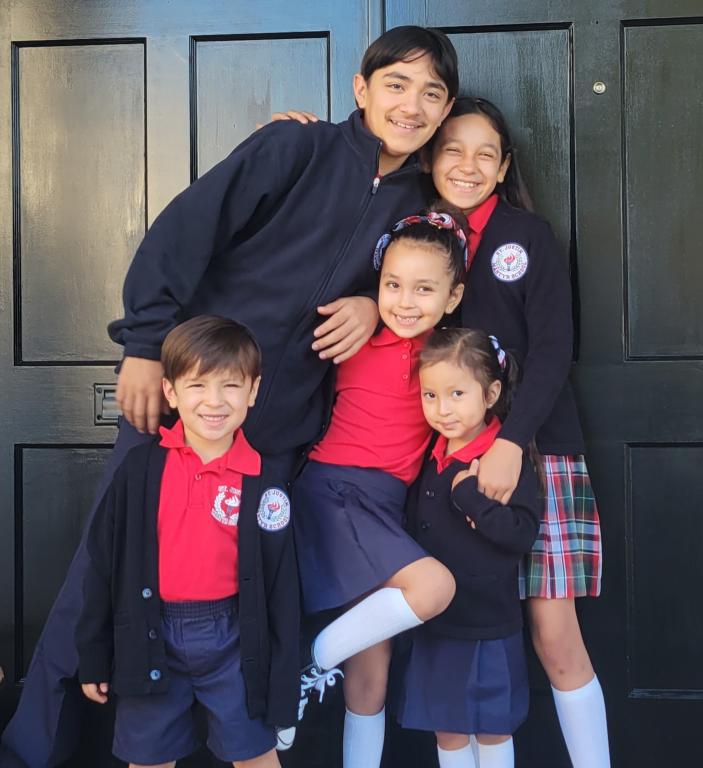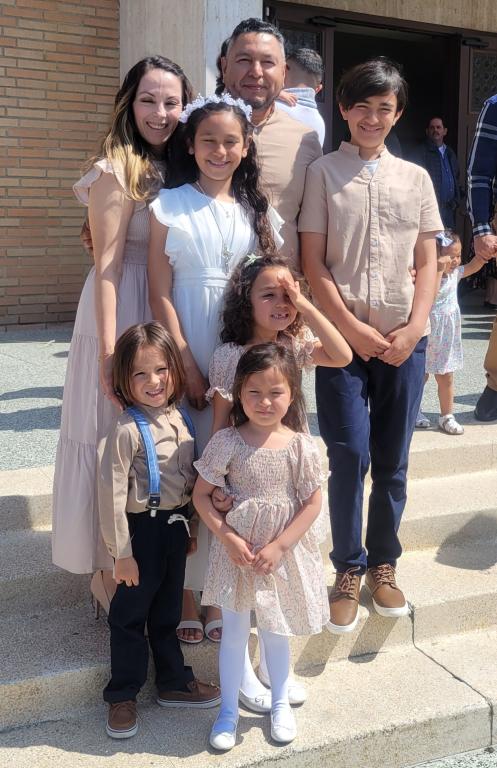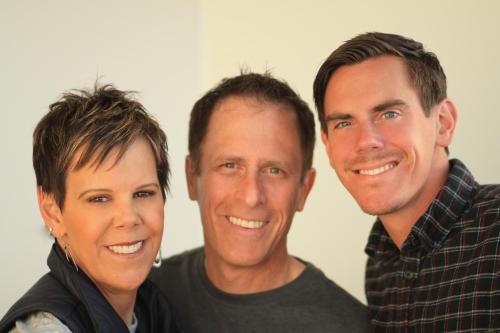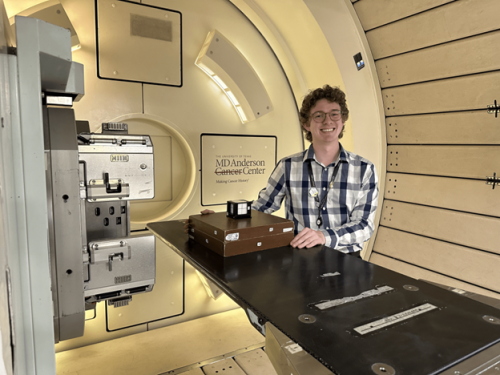

Each time doctors admitted Antonio Banda to the hospital for complications caused by chronic granulomatous disease (CGD), they discussed a bone marrow transplant (BMT) with his parents, Maria and Tony Banda. And each time, the couple decided not to move forward with the treatment. They wanted to wait until they found a fully matched donor to avoid graft versus host disease (GVHD) or transplant rejection.
“We weren’t ready. We’d done our research, and we knew the process,” said Maria.
The Bandas prayed about it, and when Maria became pregnant with twins, Tony felt they could be the key to his son’s healing. His intuition was right. Doctors tested the twins—Elihlet and Abraham—as infants to determine if they could be stem cell donor candidates for Antonio, who had just undergone yet another surgery to remove a granuloma. Both siblings were a 100% match with their brother.
“We were crying because we were so happy,” said Maria. “They were a big, big blessing for us, and Abraham was Antonio’s donor.”
A family history
The Bandas' journey with CGD began years before Antonio’s birth. Maria’s sister had lost a 3-month-old son due to an unexplained infection, and after her second son also became ill, doctors reviewed the late brother’s health history and decided to test the second baby for CGD. He tested positive for the condition, and his mother carried the genetic variant.
Maria learned she also carried the variant for CGD, but she and her husband wanted a family. They tried in vitro fertilization with preimplantation genetic testing (PGT).
“We did two rounds of that, but it didn’t work, so we prayed over it, and we both agreed to just try on our own and see what God would send us. So, we did, and we were pregnant with Antonio,” said Maria.
The Bandas didn’t test Antonio right away. Instead, they enjoyed being first-time parents. He remained healthy until about 6 months old when he started getting ear infections, and a lymph node behind his ear grew enlarged, requiring surgery to remove it. Doctors diagnosed Antonio with CGD and prescribed an antifungal, an antibiotic, and interferon injections.
The medications worked well to prevent infection, and although he needed surgery at age 3 to remove another growth, he remained healthy enough to attend school. His mother said she kept Antonio away from risky places like pumpkin patches and playgrounds, but he still played with friends and enjoyed a normal childhood,
“The teachers knew his condition, and we tried to keep him as healthy as possible through things like handwashing and getting him the flu shot,” said Maria.
Treatment and recovery
Antonio received his BMT at the age of 9 on August 20, 2019, and required two months of hospitalization during his recovery. Physically, Antonio did well, and his body engrafted the donated cells. However, the isolation in the hospital impacted his emotional health.
The hospital’s child life specialist suggested music therapy, which he refused the first time. The second time, the therapist included Antonio’s mother and four siblings in the music-making, and they played his favorite song—Post Malone’s “Sunflower.”
“So, we’re singing and doing the rattles, and the twins had the drums. We had all the instruments. And all of a sudden, he decided to join in,” said his mom. “Then he requested her to come every day. That really helped him a lot.”
Meanwhile, mom and dad had little time to process what their son had gone through. With the hospital 10 minutes away, Maria spent her days with Antonio while her family cared for the other children and her husband worked. At night, her husband stayed with Antonio, and Maria went home.

In October 2019, Antonio returned home from the hospital and attended school online due to the pandemic until 2021. He’s now 13 years old and in eighth grade. His top interests include baseball, flag football, and playing video games, said his mom.
Maria said she and her husband relied on each other—and their parents—for support through Antonio’s treatment. Maria also found community in the CGD Association of America, a nonprofit supporting families affected by CGD, where she met other moms who experienced similar journeys.
The best advice she can give other parents is to have hope, advocate for their child, and remember that parents ultimately make the decision on treatment.
“The choice of the transplant is so hard to make, and that’s why it took us such a long time to really do it. I know some parents go ahead and say, ‘I want to do the bone marrow transplant right away,’ and they do it. I’m happy they do it, but look at the process, do your homework, and research because I think that research is very important,” said Maria. “Trust your instincts, that’s all. That’s what we did.”
Chronic Granulomatous Disease Association of America

The Chronic Granulomatous Disease Association of America (CGDAA) is committed to advocating on behalf of patients, carriers, and families by providing clear, accurate, and independent news and information about CGD and advancing CGD research.
Sign up for updates from IDF
Receive news and helpful resources to your cell phone or inbox. You can change or cancel your subscription at any time.












